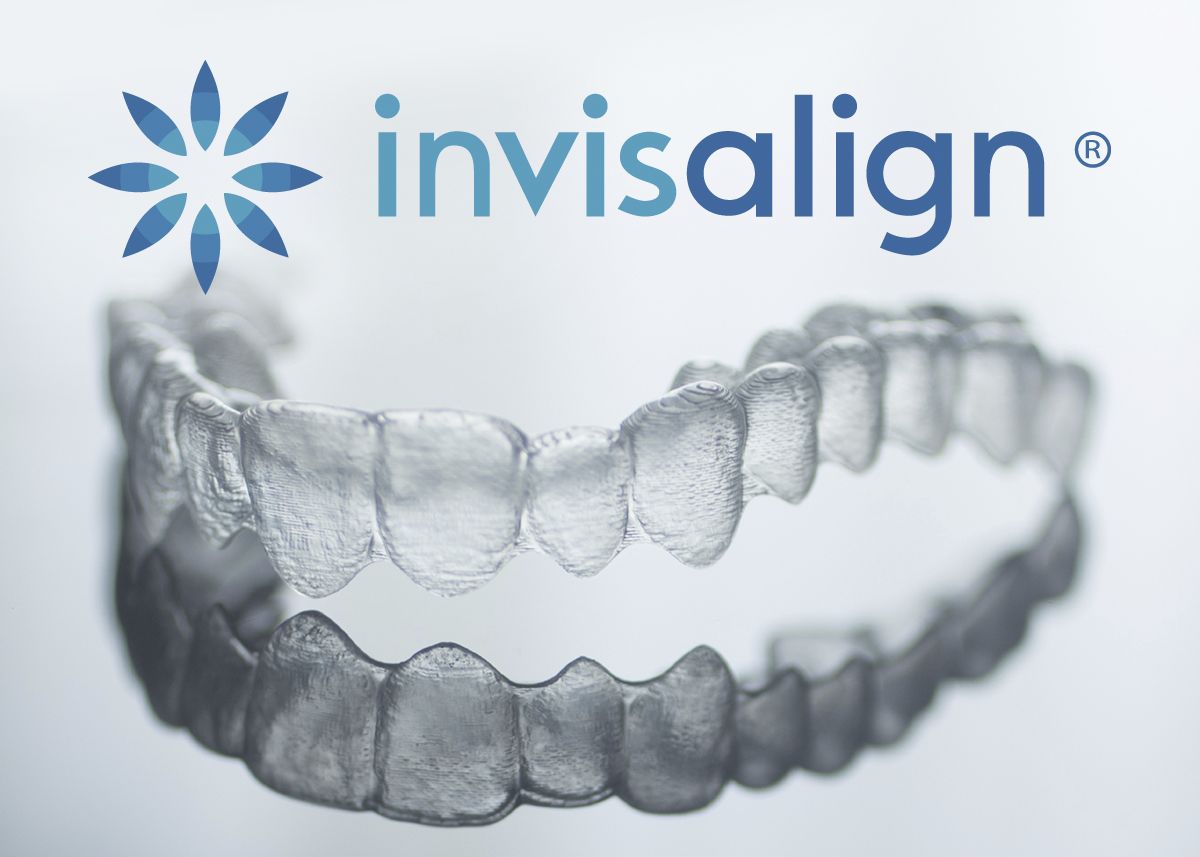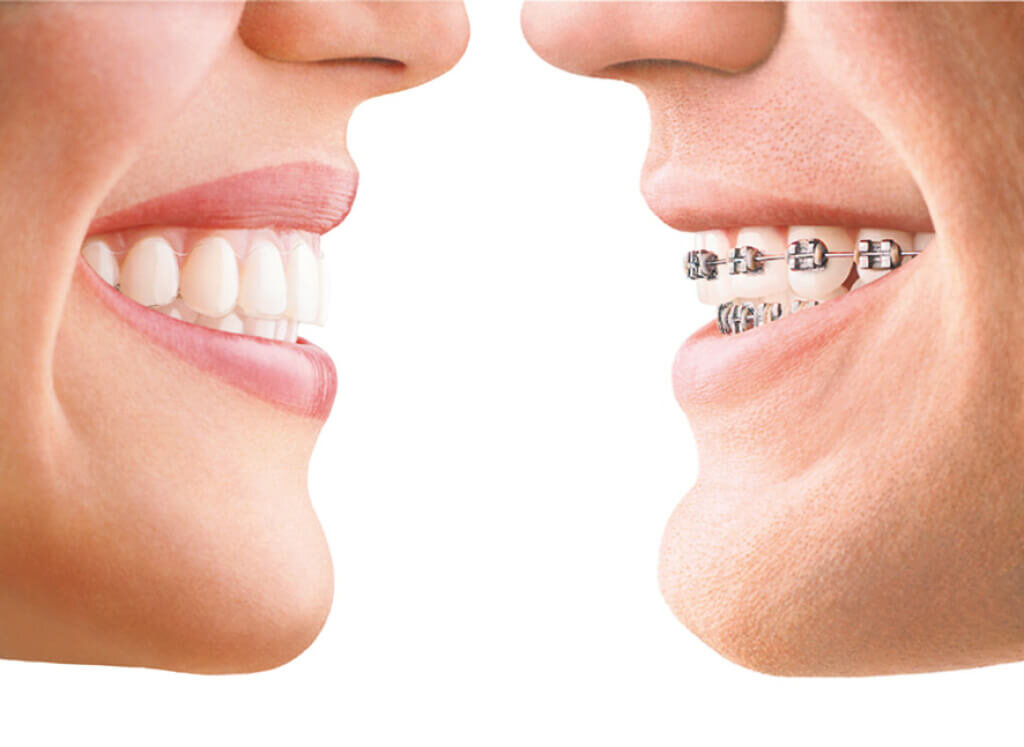Invisalign vs. Traditional Braces: Which Choice Is Right for You?
When considering orthodontic treatment, the option in between Invisalign and traditional braces presents a number of essential factors that merit careful examination. Invisalign supplies a very discreet option with detachable aligners, while typical dental braces provide a more visible yet effective service for serious misalignment. Each choice includes unique benefits and drawbacks associated to visual appeals, comfort, treatment duration, and price. Understanding these subtleties is crucial for making an informed choice that straightens with your individual choices and way of life. The question remains: which option will best meet your orthodontic needs and assumptions?
Introduction of Treatment Alternatives

In contrast, standard braces include steel braces and cables that are bound to the teeth. This approach uses continual pressure gradually to attain positioning. While reliable for complex orthodontic problems, typical dental braces require routine gos to for changes and can posture challenges in preserving dental health as a result of the difficulty of cleansing about cables and braces.
Both options have their values, and the selection frequently hinges on certain oral problems, way of living choices, and patient compliance. Ultimately, seeking advice from an orthodontic professional is important for figuring out one of the most ideal therapy strategy customized to private demands. Recognizing the subtleties of each alternative can dramatically affect the total success of orthodontic treatment.
Visual Factors To Consider
A substantial variable affecting the option between Invisalign and conventional dental braces is the aesthetic allure each therapy provides. Invisalign aligners are crafted from clear plastic, making them practically unseen when worn. This discreet look is specifically interesting teens and grownups that may feel uncomfortable concerning their orthodontic therapy. The ability to maintain an all-natural smile throughout the positioning procedure can considerably enhance the person's self-confidence in social and professional setups.
In comparison, conventional braces include metal brackets and wires, which can be a lot more noticeable. While advancements in orthodontic modern technology have brought about the advancement of smaller braces and tinted elastics, typical dental braces still preserve a more noticeable account. For some individuals, the exposure of dental braces might hinder them from seeking essential treatment.
Eventually, the option between Invisalign and conventional braces might rest on individual preferences concerning appearances. Patients who focus on discretion frequently favor Invisalign, while those who are much less worried concerning visibility may opt for typical braces. Comprehending the visual implications of each choice is essential for making a notified choice that lines up with one's way of life and choices.
Comfort and Convenience

In terms of convenience, Invisalign aligners are removable, making it possible for people to appreciate their preferred foods without restriction and maintain optimum dental hygiene. Cleaning and flossing are streamlined, as the aligners can be gotten during these regimens, whereas conventional braces call for cautious maneuvering around wires and braces.
In comparison, traditional braces require regular modifications, making them much less convenient for those with hectic timetables. In general, the convenience and ease of Invisalign make it an attractive selection for many individuals looking for orthodontic therapy.
Treatment Duration and Performance
While both Invisalign and standard braces work in fixing dental misalignments, the duration of treatment can vary considerably between both options. Normally, Invisalign treatment can take anywhere from 12 to 18 months, relying on the intricacy of the case. The clear aligners work by slowly moving teeth right into their wanted settings, and normal follow-ups with an orthodontist help guarantee development stays on course.
In comparison, typical dental braces often require a longer commitment, typically ranging from 18 months to three years. This is because of their fixed nature and the use of braces and cables, which can be a lot more efficient for complicated situations and serious misalignments (Invisalign). The treatment effectiveness of traditional braces is well-documented, as they permit specific adjustments and better control over tooth activity
Eventually, the option between Invisalign and traditional braces might depend upon both the expected treatment duration and the specific oral concerns available. Consulting with an orthodontist is vital, as they can offer tailored recommendations based upon private needs, guaranteeing the chosen approach lines up with preferred outcomes and durations.
Price Contrast and Insurance Coverage Options
Price plays a considerable function in the decision-making process for people thinking about orthodontic therapy, whether choosing for Invisalign or conventional dental braces. Generally, the cost of Invisalign arrays from $3,000 to find more $8,000, while standard braces commonly cost in between $2,000 and $6,000. Aspects influencing these expenses include the intricacy of the case, the period of treatment, and geographical place.
Insurance protection can considerably influence out-of-pocket expenses. Several dental insurance policy plans give partial coverage for orthodontic therapies, but the specifics can differ extensively. It is important for clients to review their insurance plan to figure out the extent of protection for either alternative. Typically, traditional dental braces may be extra frequently covered by insurance strategies contrasted to Invisalign, which some insurance companies classify as a cosmetic procedure.
Additionally, several orthodontic methods use versatile layaway plan, making both therapy options a lot more obtainable. Patients should inquire about potential financing options and discounts for in advance repayments. Examining the overall expense, including insurance coverage benefits and layaway plan, is vital for making a notified decision that aligns with both aesthetic preferences and spending plan factors to consider.

Verdict
In recap, the selection in between Invisalign and typical dental braces depends upon several factors, including visual choices, convenience, treatment duration, and cost. Invisalign supplies a very discreet, detachable choice that assists in oral health and nutritional versatility, while conventional braces might be extra ideal for complicated dental issues and often advice come with a lower price factor. Eventually, assessment with an orthodontist is vital to examine specific scenarios and identify the most proper treatment alternative for accomplishing optimal dental alignment.
When taking into consideration orthodontic treatment, the choice in between Invisalign and conventional dental braces provides numerous crucial elements that merit cautious evaluation.Contrasting Invisalign and conventional dental braces reveals distinctive treatment options for orthodontic improvement.While click here for more info both Invisalign and standard braces are efficient in correcting dental imbalances, the duration of treatment can vary significantly in between the 2 choices.Price plays a substantial function in the decision-making procedure for individuals thinking about orthodontic therapy, whether choosing for Invisalign or typical braces.In summary, the selection in between Invisalign and traditional braces pivots on multiple elements, consisting of visual preferences, comfort, therapy duration, and expense.